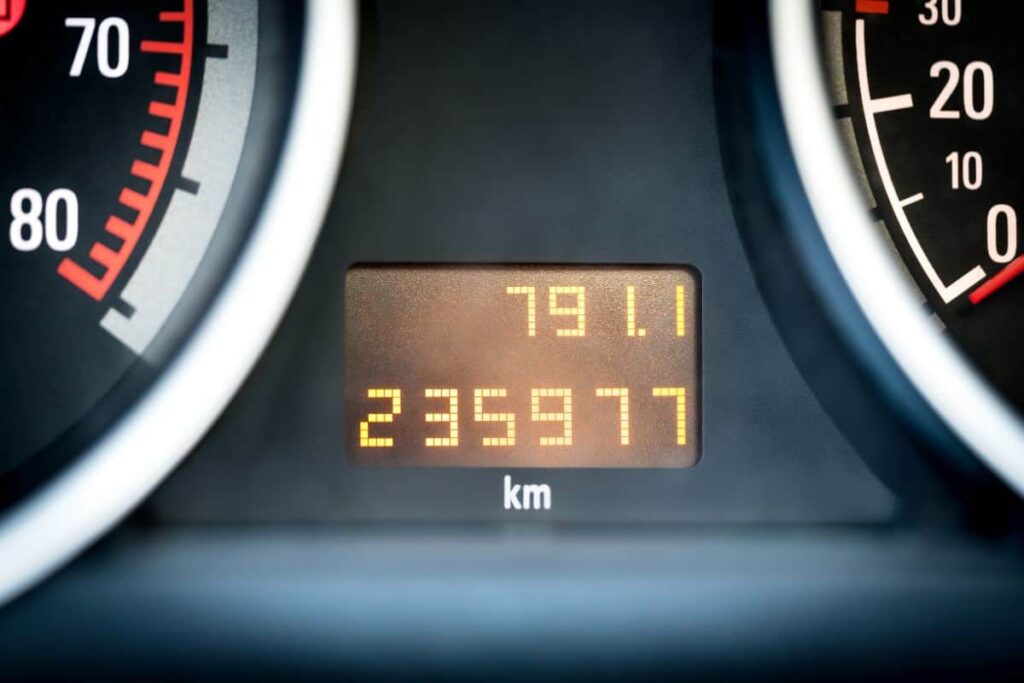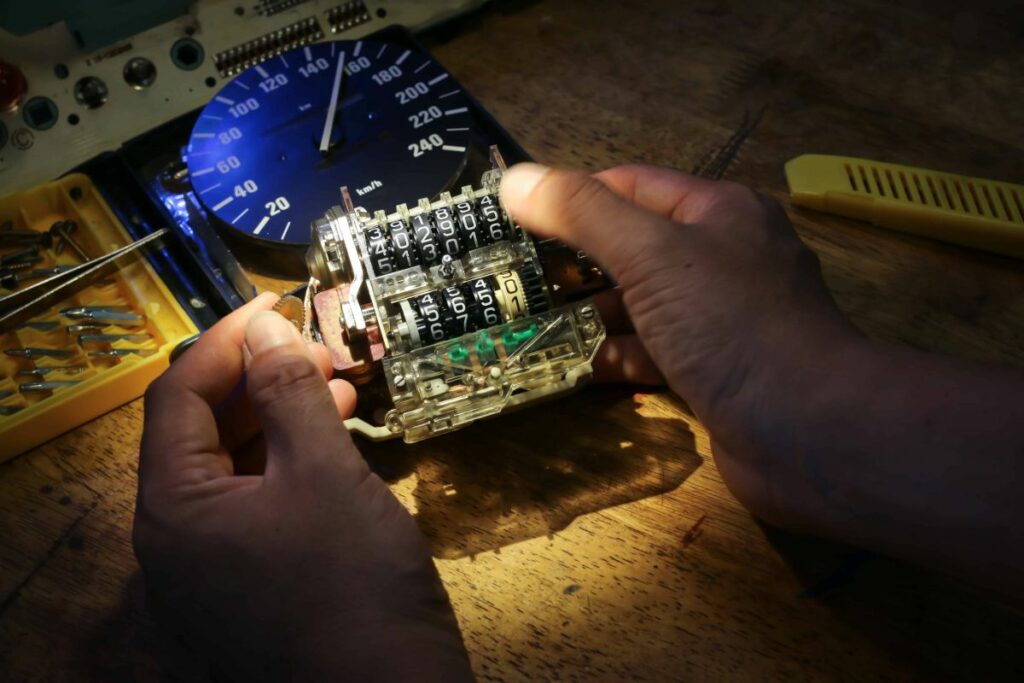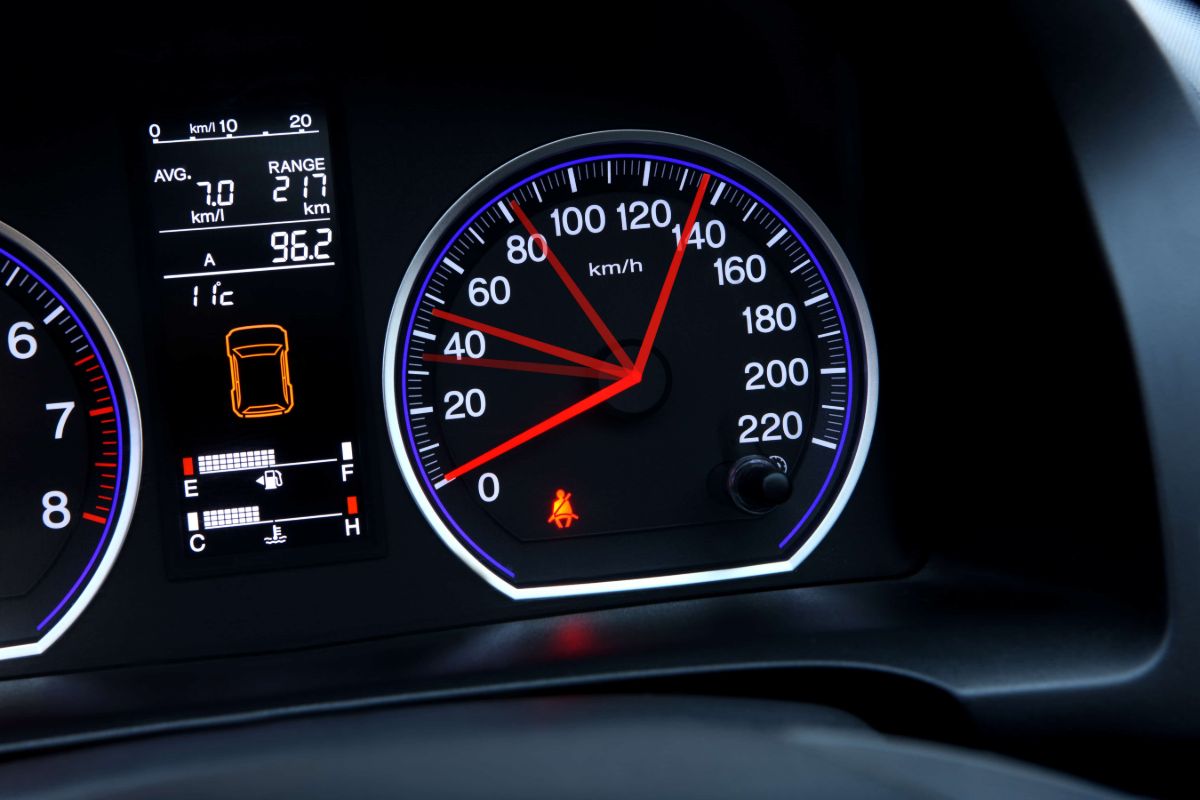Odometer Reading: Can Digital Odometers Be Rolled Back? Buyer Beware, New Devices Make This Possible and What To Do About It
When considering a used car, you have to be extra vigilant about scams. One of the most popular scams out there is odometer rollback, which involves tampering with a car's odometer reading so that it reflects a lower mileage count. In doing so, scammers can charge more for a vehicle despite its actual mileage.
Back when mechanical odometers were the norm, it was much easier to tamper with the gauges, so it wasn't uncommon to find a used car for sale that had a rolled-back odometer. But don't assume that just because modern cars have digital gauges, they can’t be tampered with. In fact, with today's odometer rollback software, digital odometer fraud can be harder to discern.
As a car buyer, you should equip yourself with the signs of odometer rollback, whether done mechanically or digitally. Below, we list some tell-tale signs so you can avoid getting taken advantage of.
What Is An Odometer Reading?

Derived from the Greek words for "path" and "measure,” the word odometer describes the part of your car that counts how many miles you've driven. It's usually located in the center of the dashboard, and it has a bunch of digits that display information about engine performance, such as RPM and mileage.
Odometers have been around since 15 BCE, but today’s modern odometers can be traced back to Blaise Pascal’s prototype, called the Pascaline. The machine had wheels and gears, with each gear containing ten teeth that, when moved in one complete revolution, engaged another gear.
Modern mechanical odometers (used in cars manufactured up until the early 2000s) comprise several cogs. As the car's wheels rotate, a mechanism turns the cogs, reflecting as numbers on the meter.
A digital odometer reading, on the other hand, is computed by a magnetic sensor that is placed close to a toothed wheel in the gearbox. This creates a current, or a signal, which is then sent from the sensor to the car’s engine control unit. The ECU converts the current to a voltage, which activates a circuit board.
Most modern instruments are lighter, smaller, and have fewer moving parts. They also don’t malfunction or wear out as often as their older counterparts – keep this in mind in case someone with a relatively new car says they replaced their odometer due to wear.
In addition to what you see on the dashboard, most cars have a trip odometer. This can be reset anytime and helps car owners measure a particular distance without having to calculate off of the main odometer's reading.
Odometer Rollback – What Is It?

Odometer rollback, also called odometer fraud, is the act of lowering the number stated on the vehicle's odo.
The term "rollback" exists because years ago when mechanical odometers were the norm, the practice involved literally rolling back the numbers on the meter. Today's latest vehicles now use digital odometers, but the name stuck around, so any act of tampering with odometers, mechanically or digitally, is still called rollback.
How Digital Rollback Works
According to Driving.ca, digital odometers can be rolled back by "removing the vehicle’s circuit board to change the odometer reading, or using rollback equipment that hooks right into the vehicle’s electronic system."
Mileage correction tools, also called odometer correction tools, are a dime a dozen these days and can easily be bought off Amazon or eBay. You can also find tutorials on YouTube on how to make these tools work. And some of them don't even require removing the instrument panel to work.
These tools are passed off as legal devices because they are advertised as tools for recalibrating an odometer when the vehicle's speed sensor is damaged or if the instrument panel faults. In these cases, mileage correction tools can reset instrument panels, copy, write or rewrite chip data.
But when placed in the wrong hands, these tools can also be used to rollback a vehicle's mileage and help scammers make a quick buck out of an old car. And scammers don't even need to purchase a correction tool or a "clocker.” They can just hire someone who already owns a mileage correction tool to recalibrate all their vehicles for them.
How Odometer Fraud Can Hurt You

If you are new to buying cars, you may be wondering why many first-time buyer guides spend their time talking about odometer fraud.
This is because mileage is one of the biggest factors affecting a used car's resale value. Vehicles with high mileage sell for less than cars with lower mileage. This is because, for most people, mileage reflects a car’s lifetime. The more miles there are on a vehicle, the shorter its remaining lifespan is believed to be. Most people tend to believe that cars that have racked up major miles are also more prone to breakdowns and less reliable in the long run.
With this in mind, you can begin to understand why scammers choose to lower the odometer readings on their vehicles. They want to be able to sell an old car faster than they could with its actual mileage, and they want to get more out of it too.
And if you do not arm yourself with all the ways you can spot a rolled-back odo, you can fall prey to the scam and end up paying much more than a car is actually worth. On top of that, you could end up purchasing a car that doesn’t just have a high actual mileage, but a whole spate of mechanical issues hiding under the hood as well.
How To Spot Odometer Rollback

Car buyers can usually check for odometer rollback by comparing the mileage stated in the vehicle's history report or used vehicle information package (UVIP) with the actual odometer reading in the car's dashboard. You want to make sure there are little to no discrepancies.
Next, you'll want to look at the average mileage for vehicles of the same make, model, and year. In a Carfax article about how to check for odometer rollback, it is stated that the average Canadian drives about 20,000 km per year. Multiply that by the number of years the vehicle in question has been on the road, and you have your estimate. If the number on the odometer is much lower than that, you should proceed with caution.
(But of course, keep in mind that not everyone uses their car the same way. Some car owners use different cars to commute and to go on holiday, for instance.)
If you are already suspicious of a particular vehicle, here are a few more tell-tale signs to look out for upon closer inspection:
Traditional Odometers
- The digits are misaligned
- Some dash screws are missing
- There are scratches on or around the instrument cluster
- You hear a clicking noise coming from the odometer during the test drive
- There are fingerprint marks inside the plastic cluster cover
Digital Odometers
- You see gouge or scrape marks around the instrument cluster
- There are unusual switches on the dash. These switches could help the previous owner turn the odometer "on and off" while driving so that it doesn't register the mileage
- The speedometer console doesn't quite fit into place
Keep in mind that not all discrepancies point to rollback fraud. For example, if a vehicle report notes the listed mileage as "not actual mileage,” it could mean that the car's odometer has been damaged or replaced. If your seller is upfront about this, that shouldn't be a problem. If a vehicle reaches enough miles to hit the highest possible number on the odometer reading, the meter will just start over at 1. In this case, the seller should note that the odometer "exceeds mileage limits" in the report.
So You Have Proof Of Odometer Rollback, What Now?

Before you talk to your seller, consult with a mechanic to make sure your hunch is correct. Once you have assurance from your mechanic, try to resolve the issue with the seller as calmly as possible. As odometer fraud is illegal in Canada, you should be able to ask the seller for a refund.
If your seller is uncooperative, you can file a complaint to your local service center or ministry of transport. You can also file a policy report and/or a court claim if your seller refuses to refund you.
3 Ways You Can Protect Yourself From Odometer Fraud

Odometer rollback fraud can cost you a lot of time and money if you're not careful. Aside from being on the lookout for the aforementioned physical signs, there are several other ways you can protect yourself from odometer fraud:
1. Be Wary Of Curbstoners And Shady Private Sellers
A curbstoner is a professional salesman who tries to sell cars on the side of the road instead of in their dealership. Usually, these people are trying to get rid of lemons – cars that may or may not be able to get you where you need to go and that are likely to leave a sour taste in your mouth. This is because "lemon" is a term used to describe an unsellable car due to mechanical failures.
To avoid shady characters like curbstoners and scammy private sellers, make sure to trust only reputable classifieds and vehicle buy and sell sites. Avoid using online marketplaces like Facebook Marketplace or Kijiji, where you can't verify the identity of your sellers, and scams abound.
At Carpages, we make sure all vehicles posted on the site – from pickup trucks to small compact cars – are from government registered dealers or identity-verified individuals.
2. Get A Pre-Purchase Inspection And Vehicle History Report
One of the first steps you should do before buying a car is to get a pre-purchase inspection and go over the vehicle history report. These two steps will give you all the necessary info about the vehicle, including the car's make, model, and year, its registration history, lien status, bill of sale, safety standards certification, service history, and of course, mileage.
The service history is one of the most important documents you’ll need. If a car is brought into a shop for repairs, the mechanics will write down the vehicle mileage in the repair order. With this information in your hands, you can trace back to the last service done and see if the mileage reading in the odometer checks out.
In some provinces, like Ontario, private sellers are required by law to provide a Used Vehicle Information Package or UVIP.
3. Look For Signs Of Wear And Tear
If you can't find evidence of tampering on the odometer or the dashboard, there are physical signs of unusual wear that most unsuspecting buyers fail to consider. If you have reason to believe that a car is older or has had more significant use than the seller is advertising, you can check the following areas for signs of advanced wear:
- Gas, brake, and clutch pedals
- Tire tread. If a car is said to have been driven for less than 20,000 km, the original tires should be in place.
- The gear lever
- The steering wheel upholstery
- The seat covers
Conclusion
Odometer fraud has been around for years and has been a major issue for used car buyers. If you are not careful, you can easily fall prey to this scam. It is also important to keep in mind that odometer fraud can go undetected for many years. In fact, some cars could have been driven hundreds of thousands of kilometres without anyone knowing the actual mileage.
But, there are tons of ways you can protect yourself from odometer rollback schemes, from looking for the physical signs of tampering on the dash to other signs of wear and tear around the vehicle to inspecting a car's history report.
If all of this sounds a bit too overwhelming, you can simply lower your risk of buying tampered vehicles by using trusted sites and dealers only. Carpages.ca vets all sellers that post on our site, so you can rest assured that all cars posted are legitimate.
